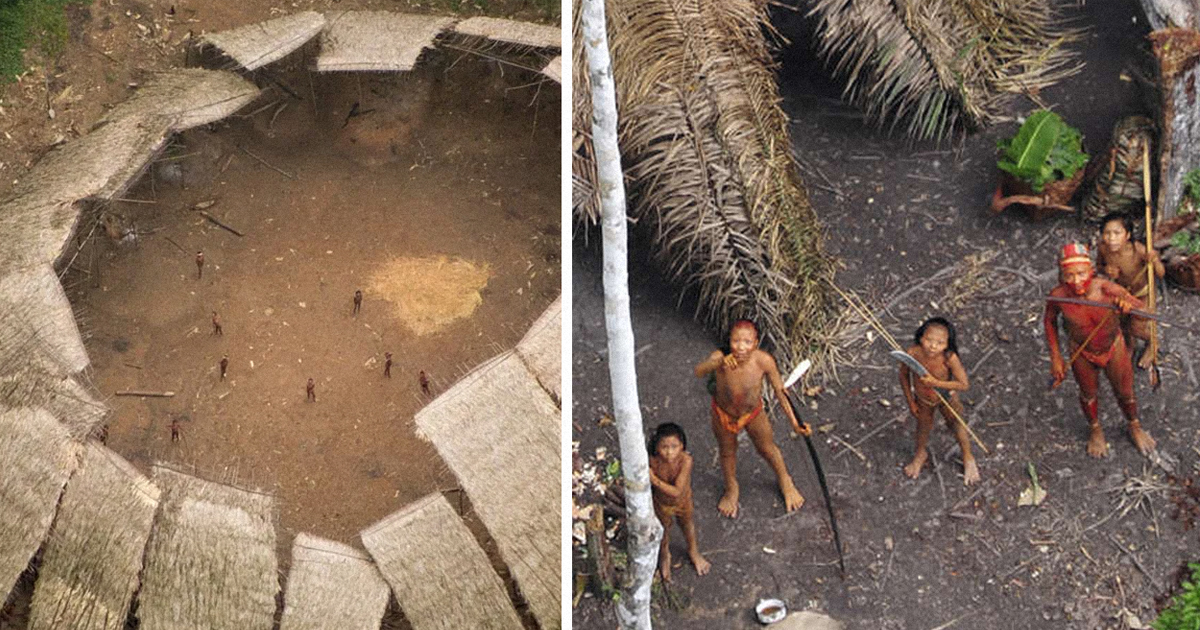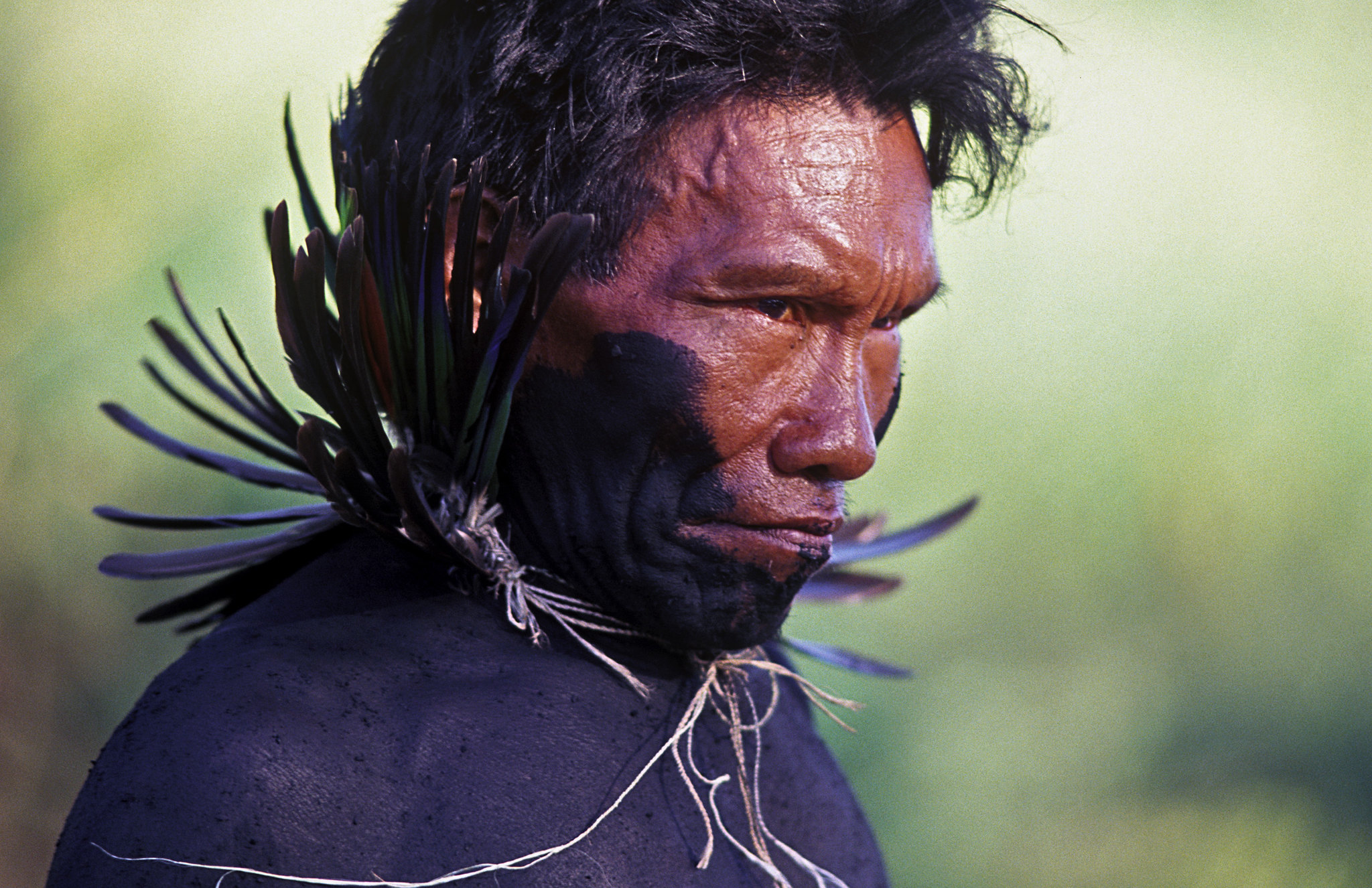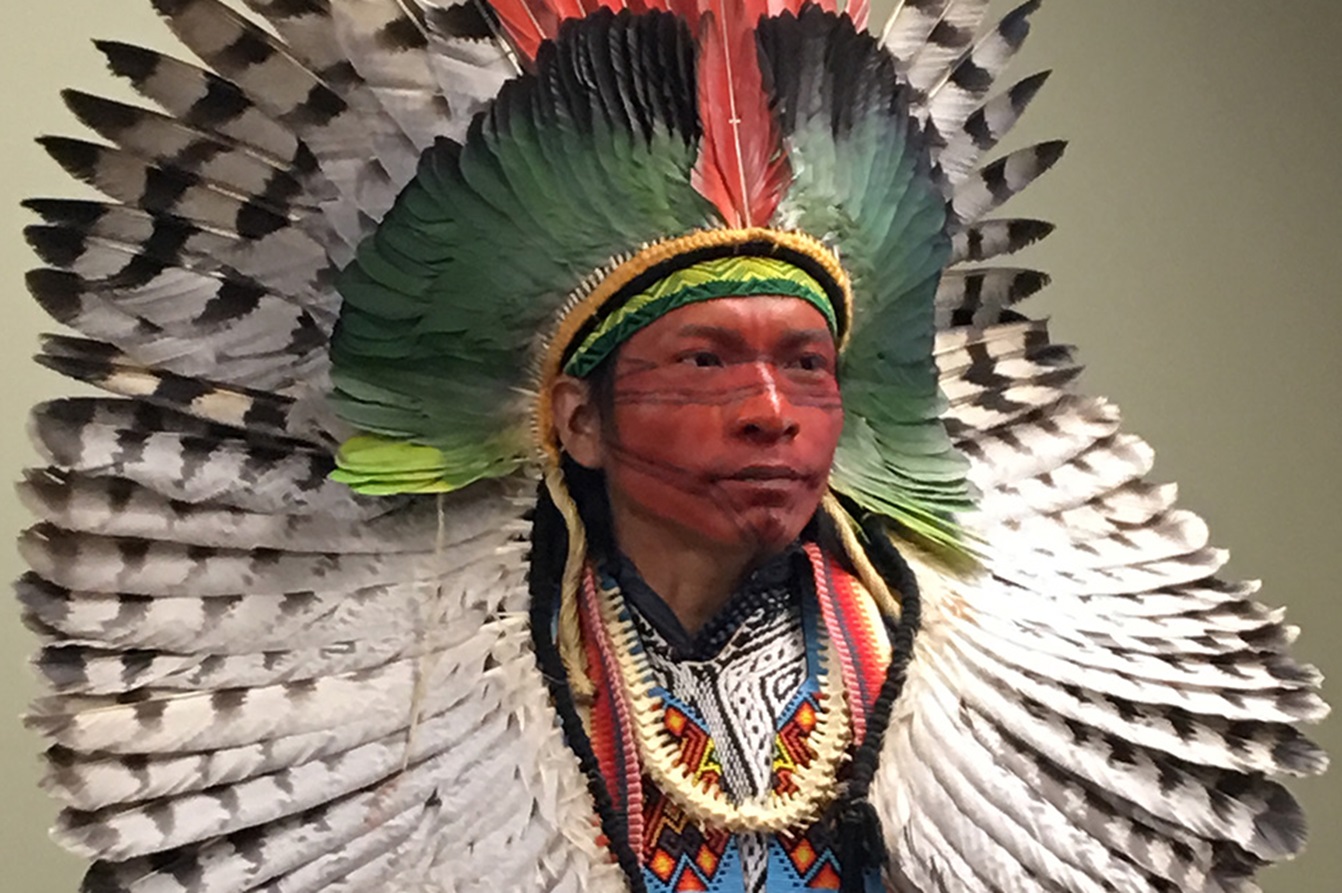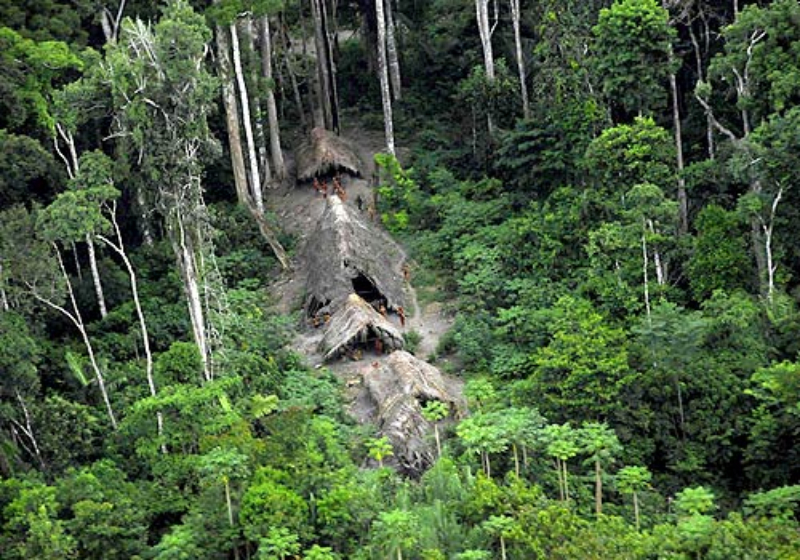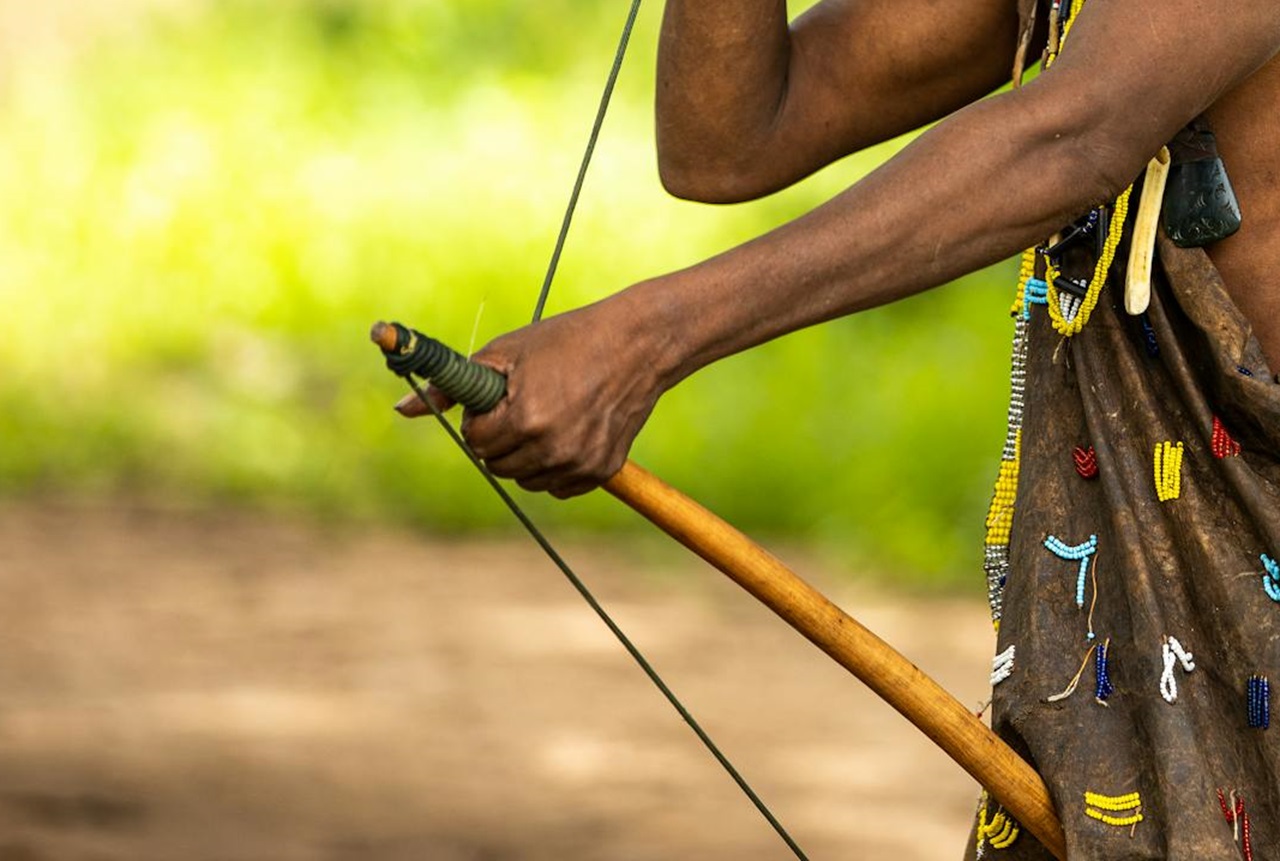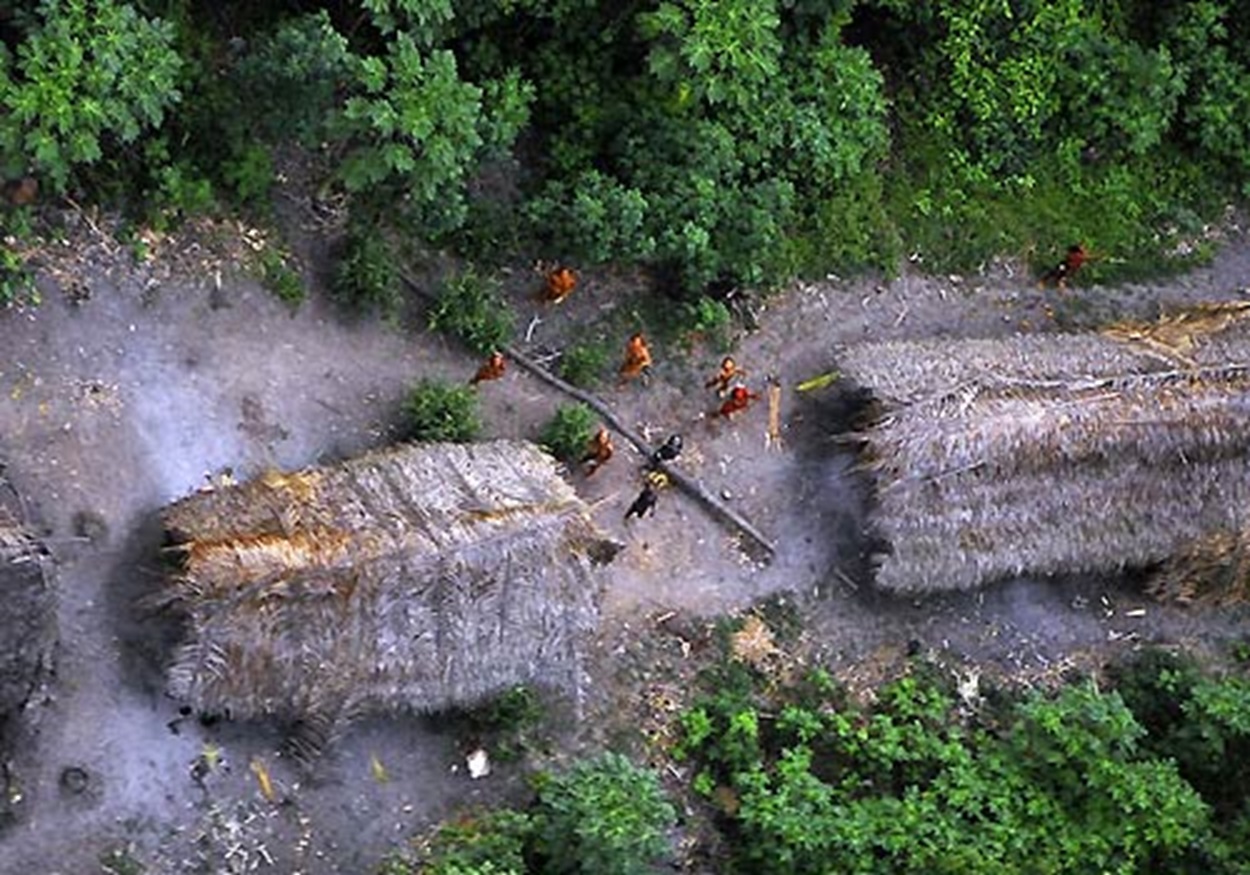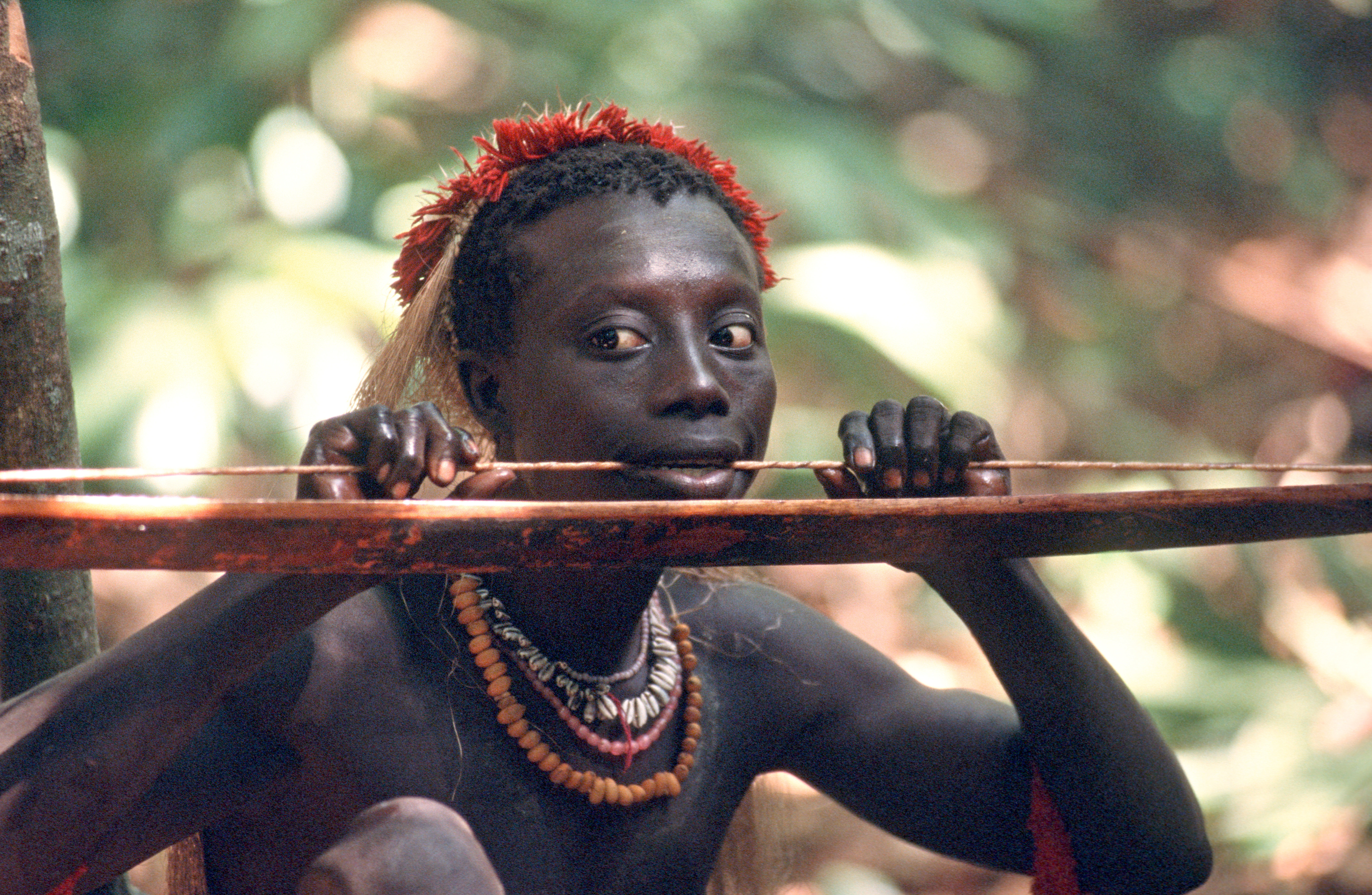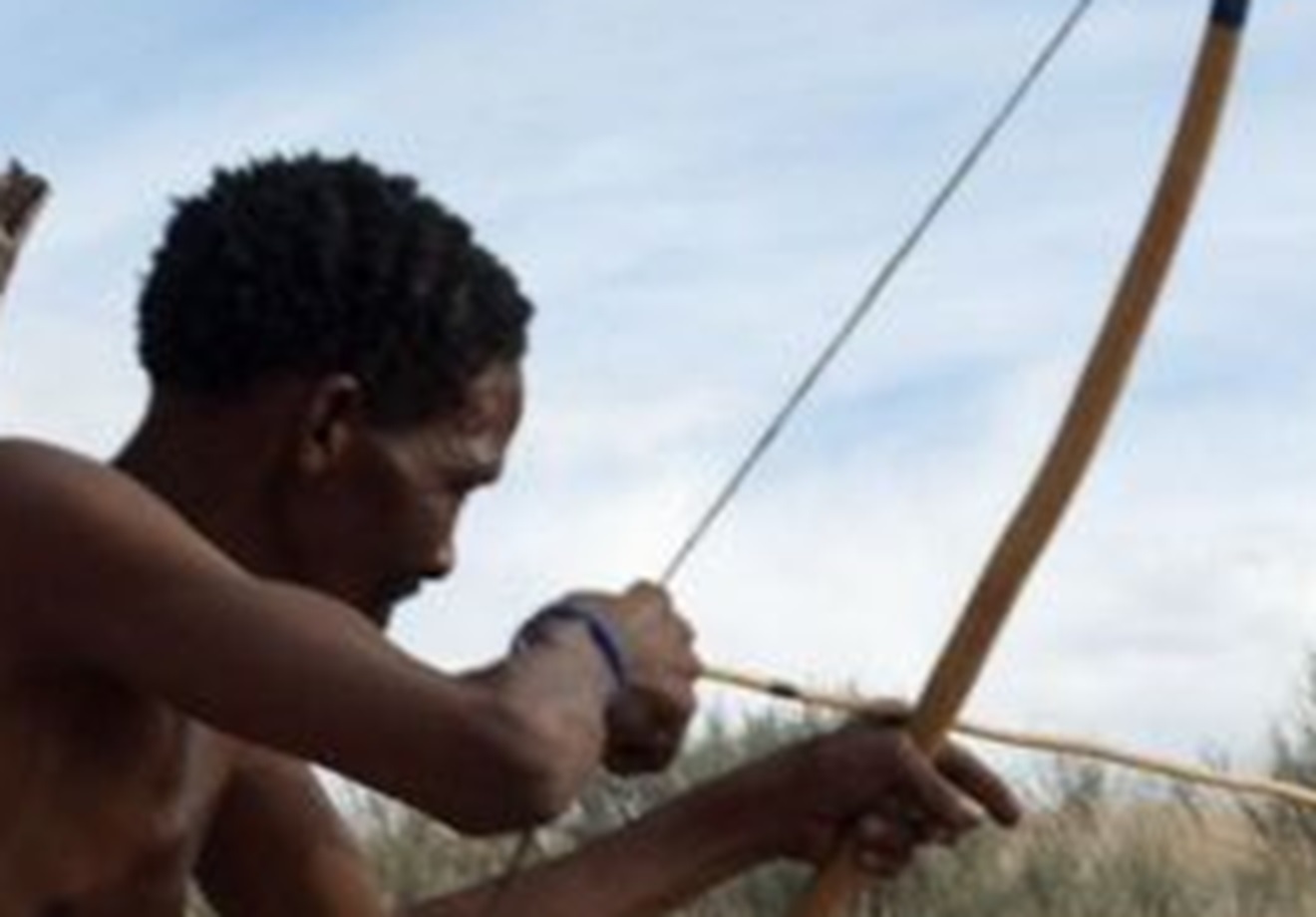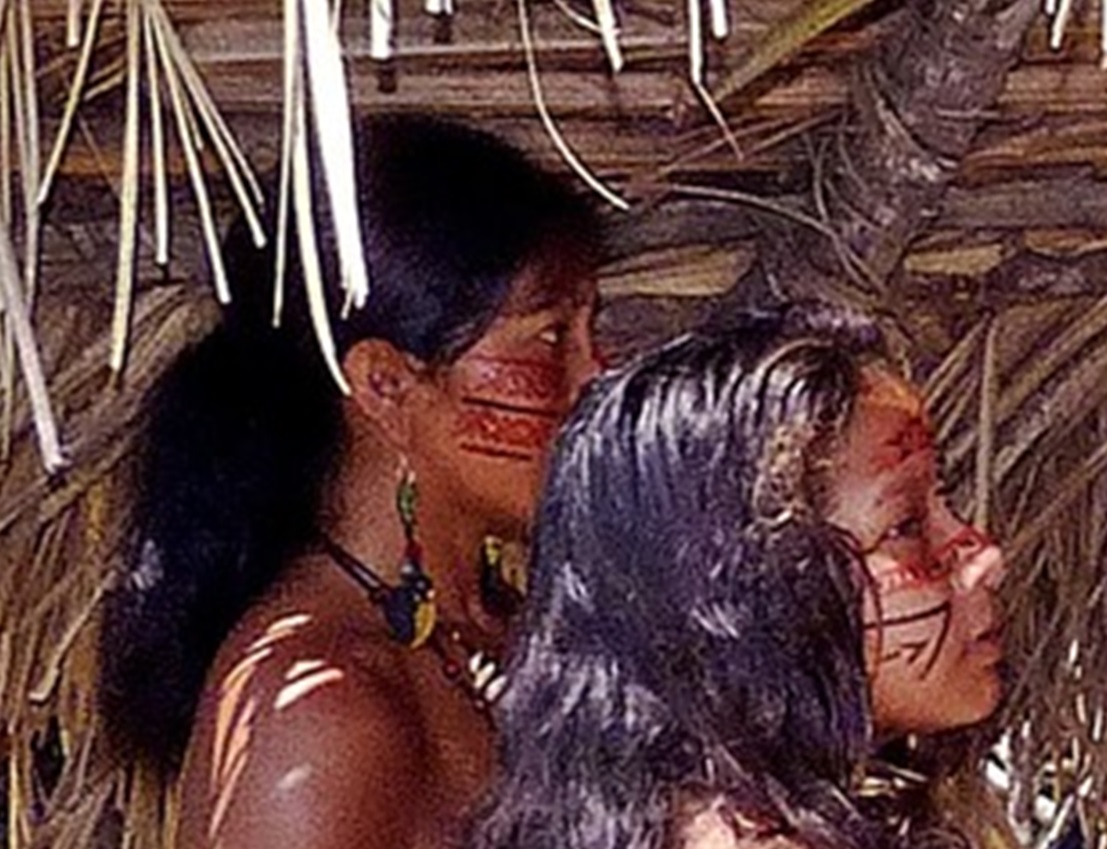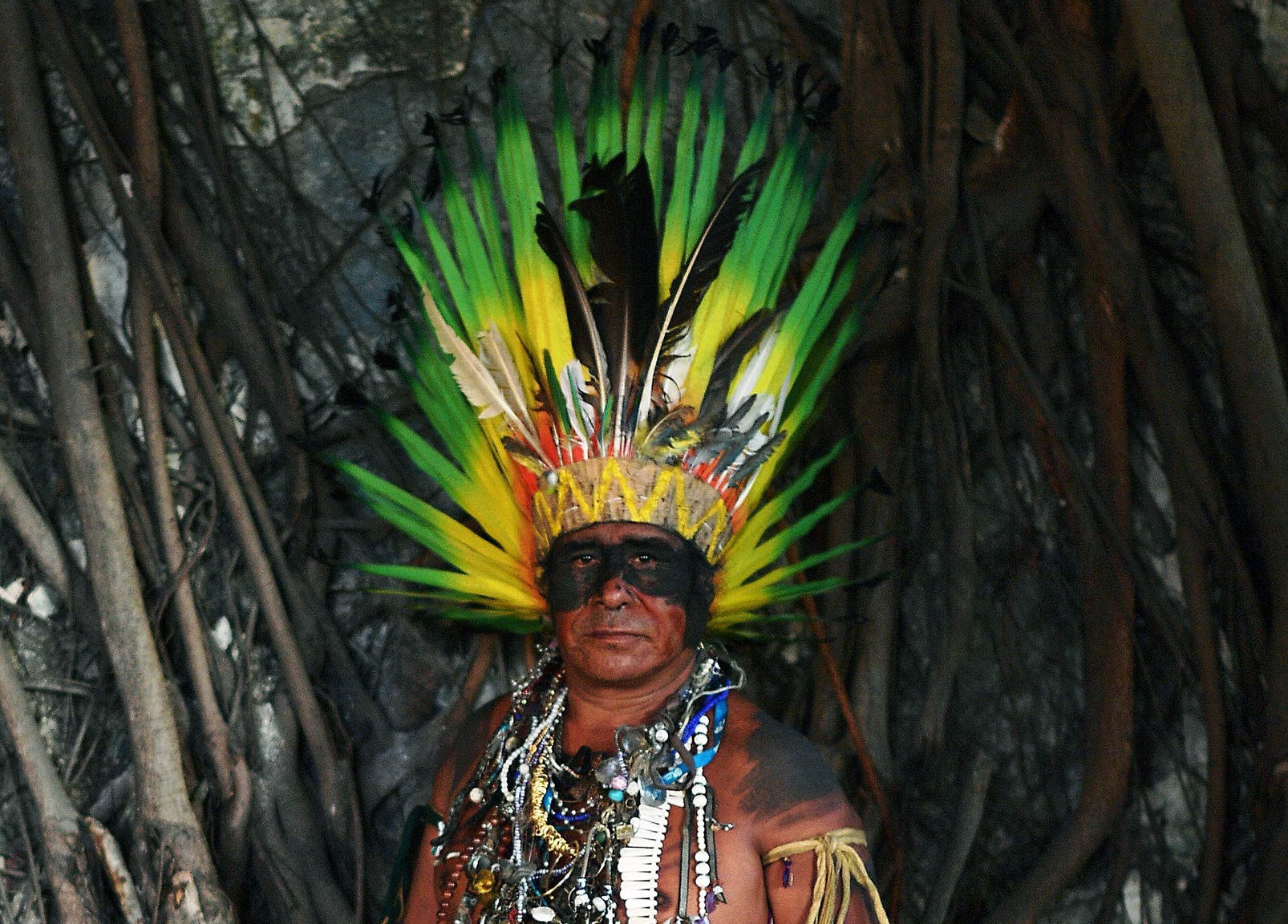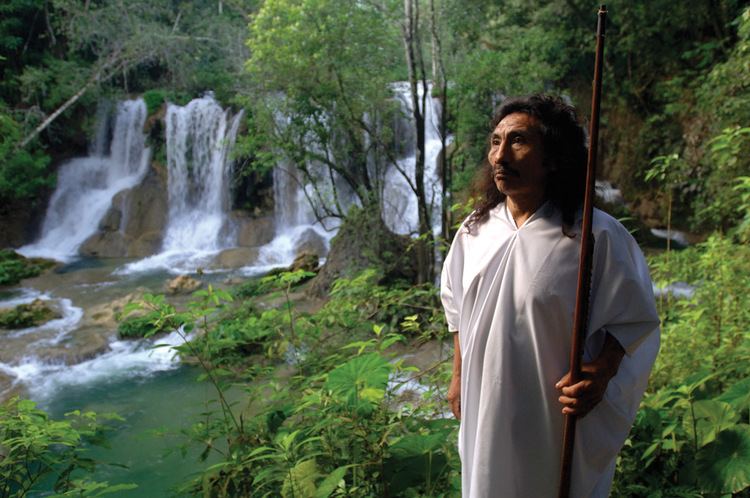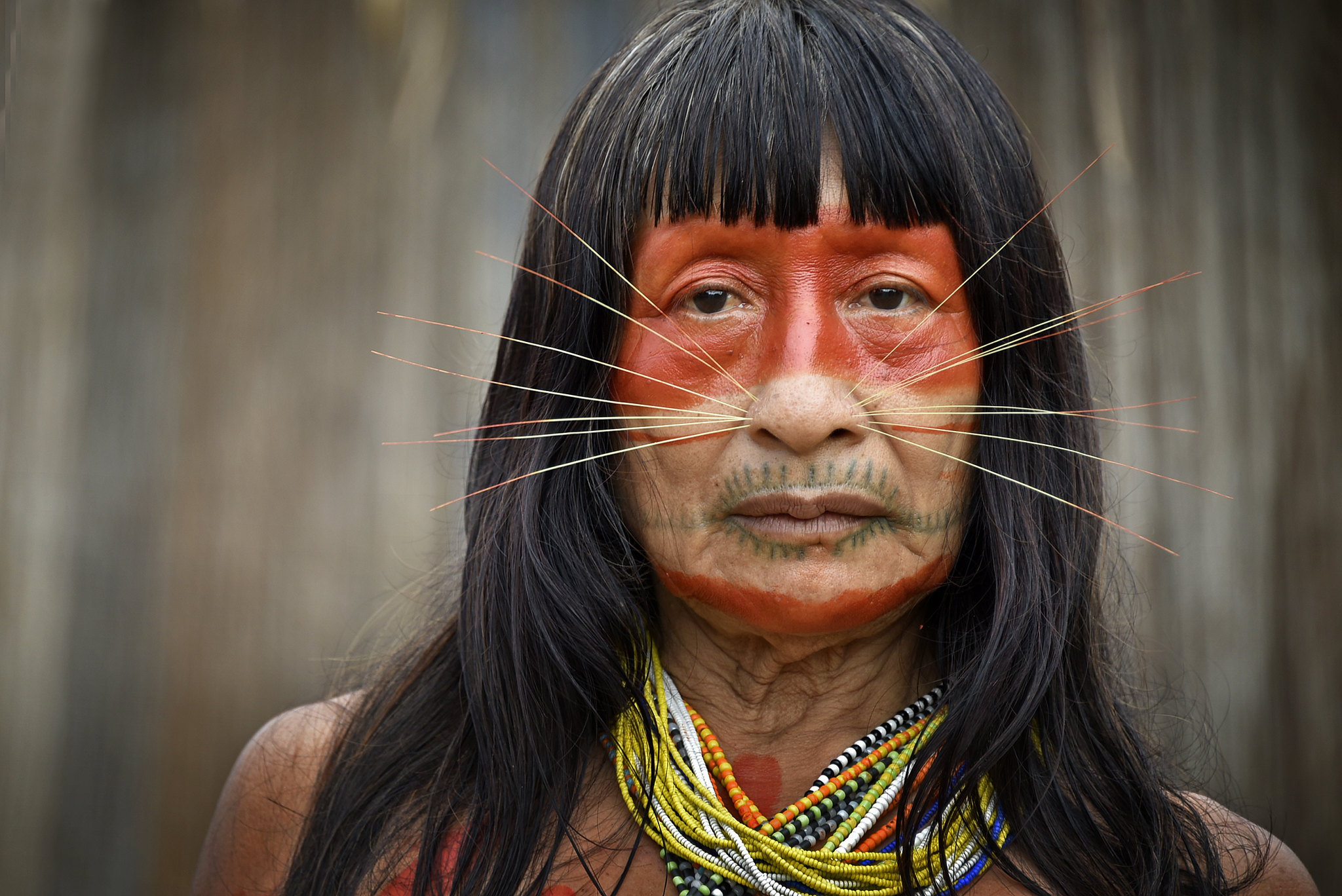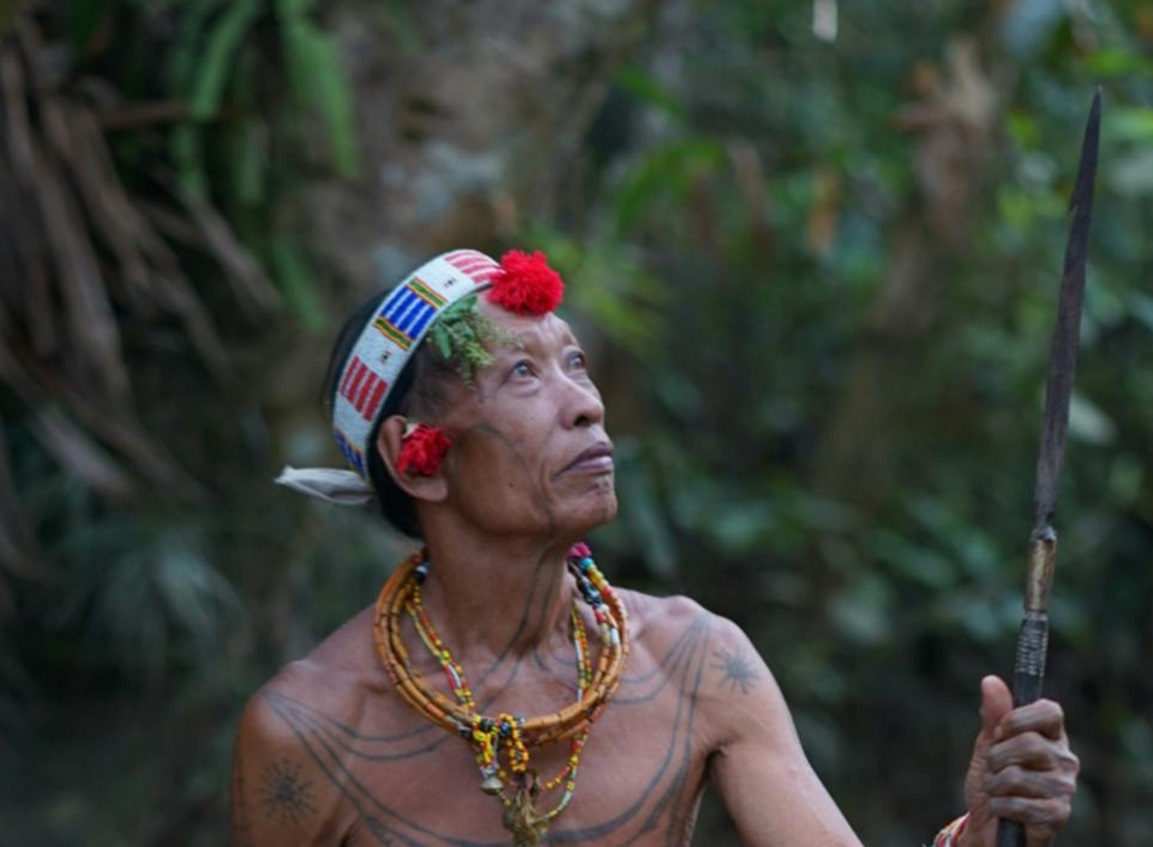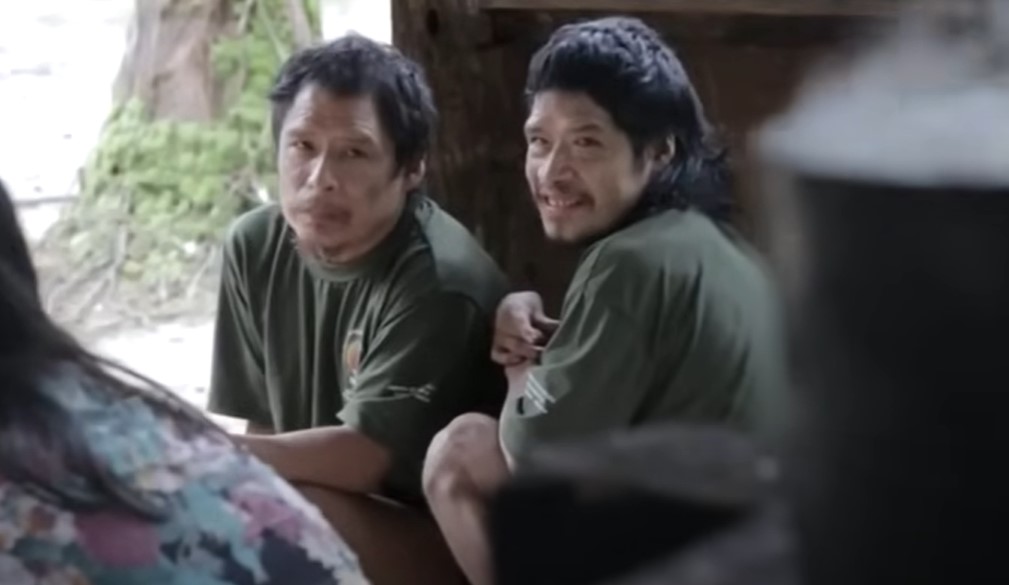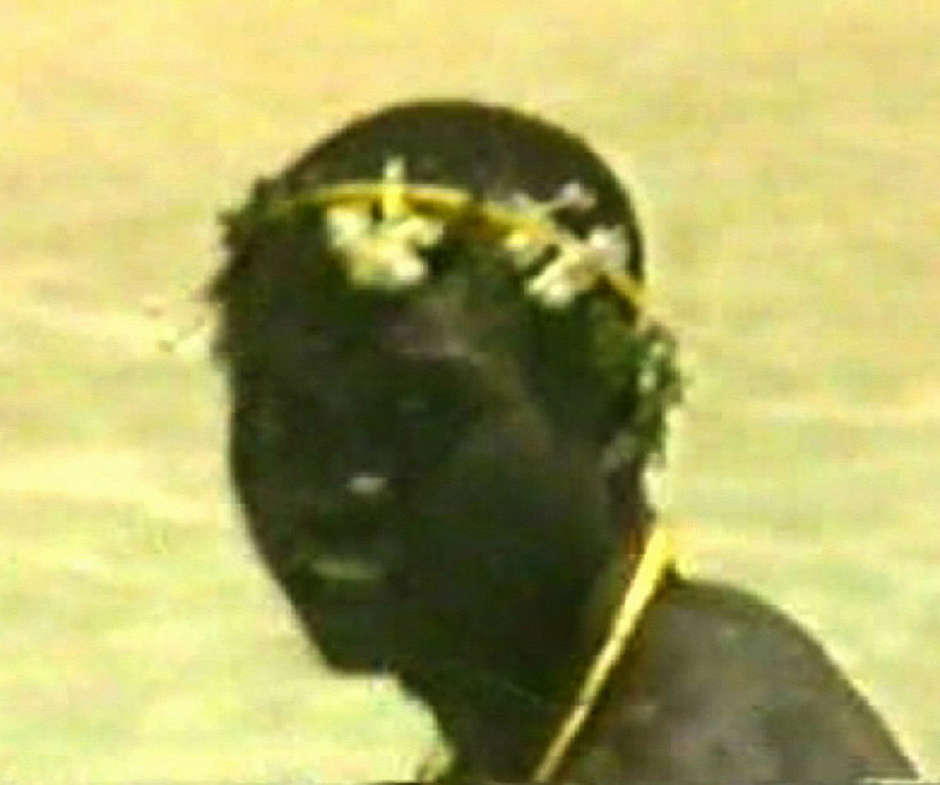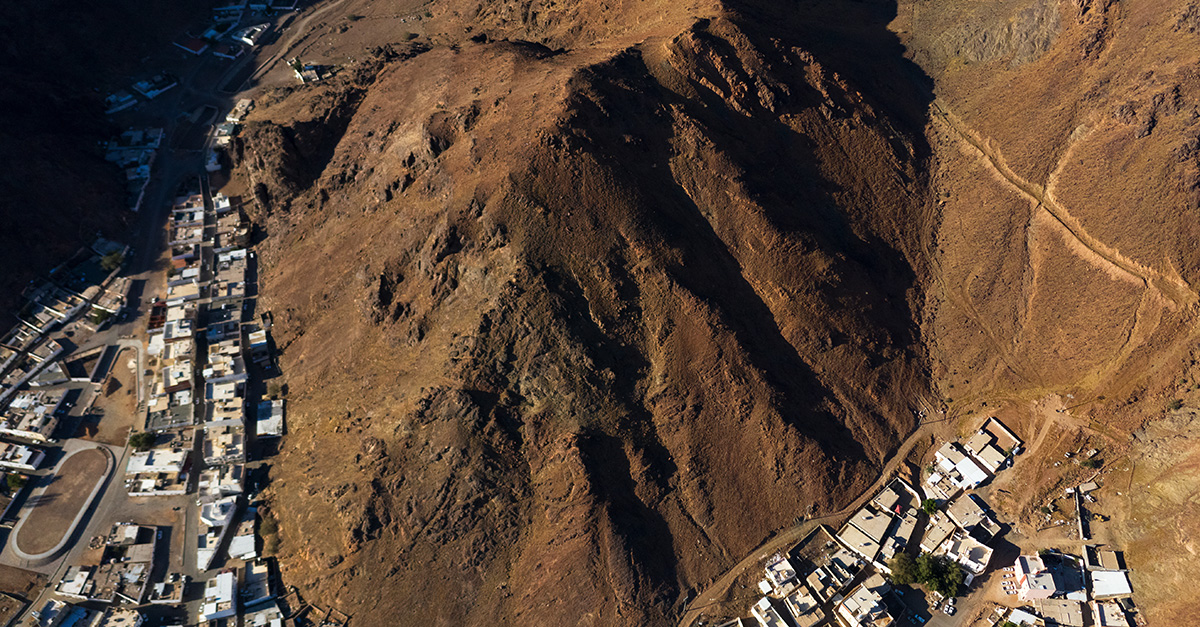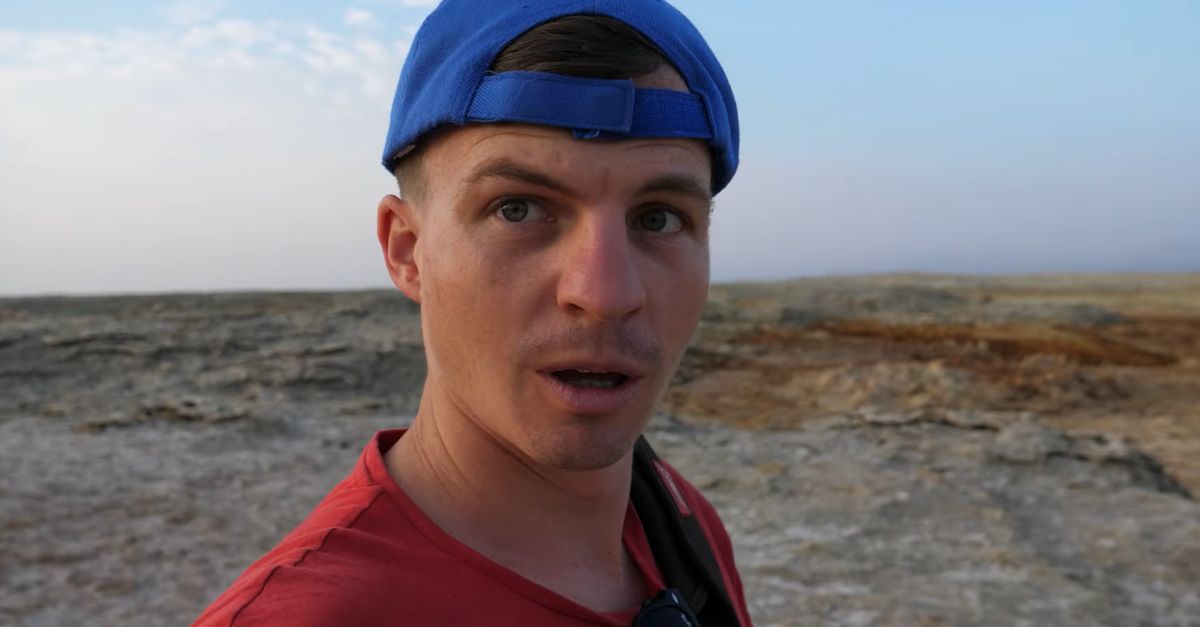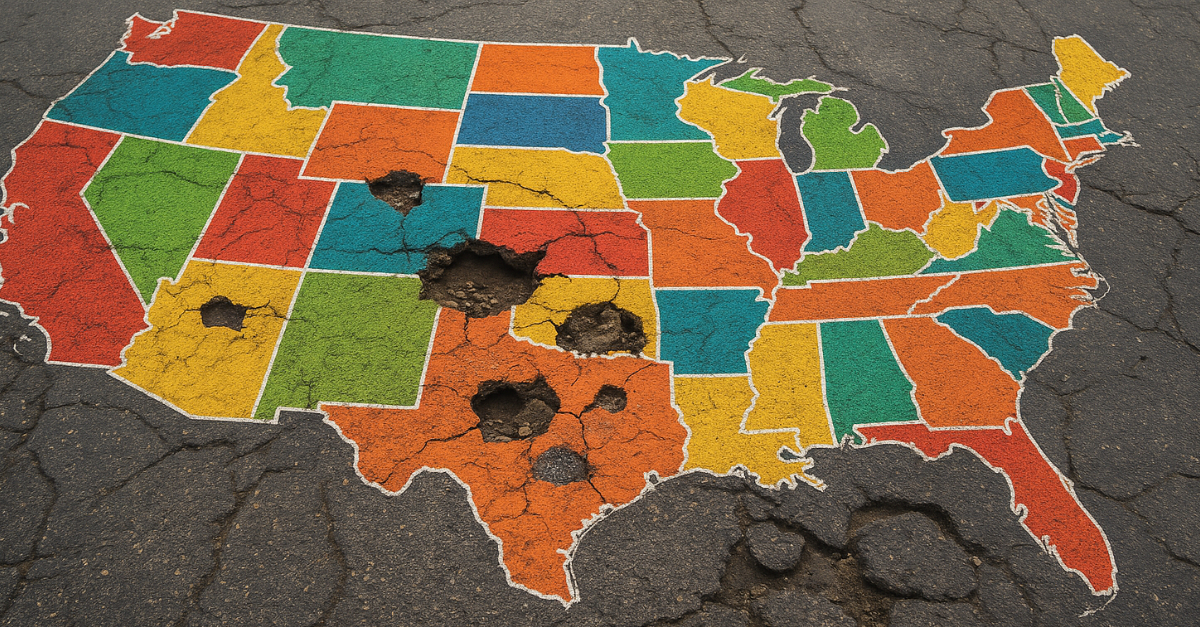No outsiders allowed
Uncontacted tribes dwell in the shadows of the modern world, hidden deep within remote, untouched lands. Guardians of ancient ways, they remain veiled by strict protections—preserving secrets passed down through generations. Many shun outsiders, choosing isolation as their shield, which only deepens the enigma surrounding them. Journey further to uncover the hidden lives of the planet’s most elusive communities.
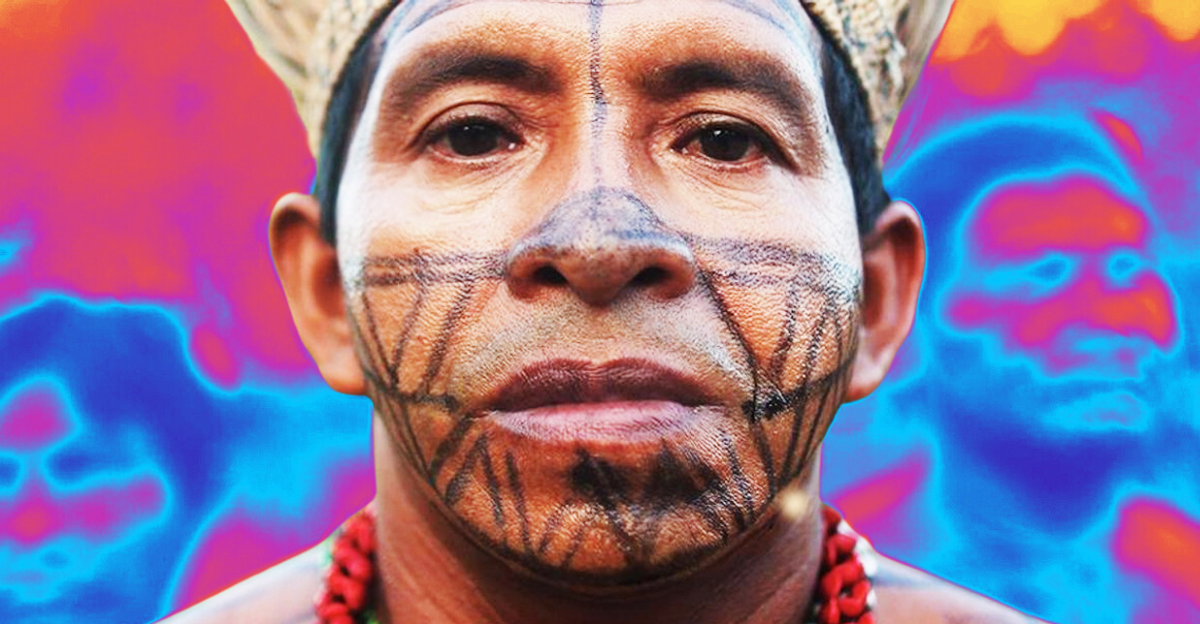
Aché
The Aché people were small nomadic groups living in eastern Paraguay before the 1960s. They are known for having very unique tribal rituals. For example, Both genders also participate in scarification rituals, and death rituals are performed habitually to ward off evil spirits. Some tribes even practice funerary cannibalism, with the belongings of the deceased burned during funeral ceremonies.
Awá
The Awá are skilled hunter-gatherers living in northeastern Brazil who use shotguns or bows for hunting. They have deep knowledge of the forest, consuming animals only in certain seasons to protect sustainability.
They avoid eating bats due to religious beliefs, and they care for monkey pets like family. Unfortunately, illegal ranchers pose a threat as they abuse their resources and destroy their land.
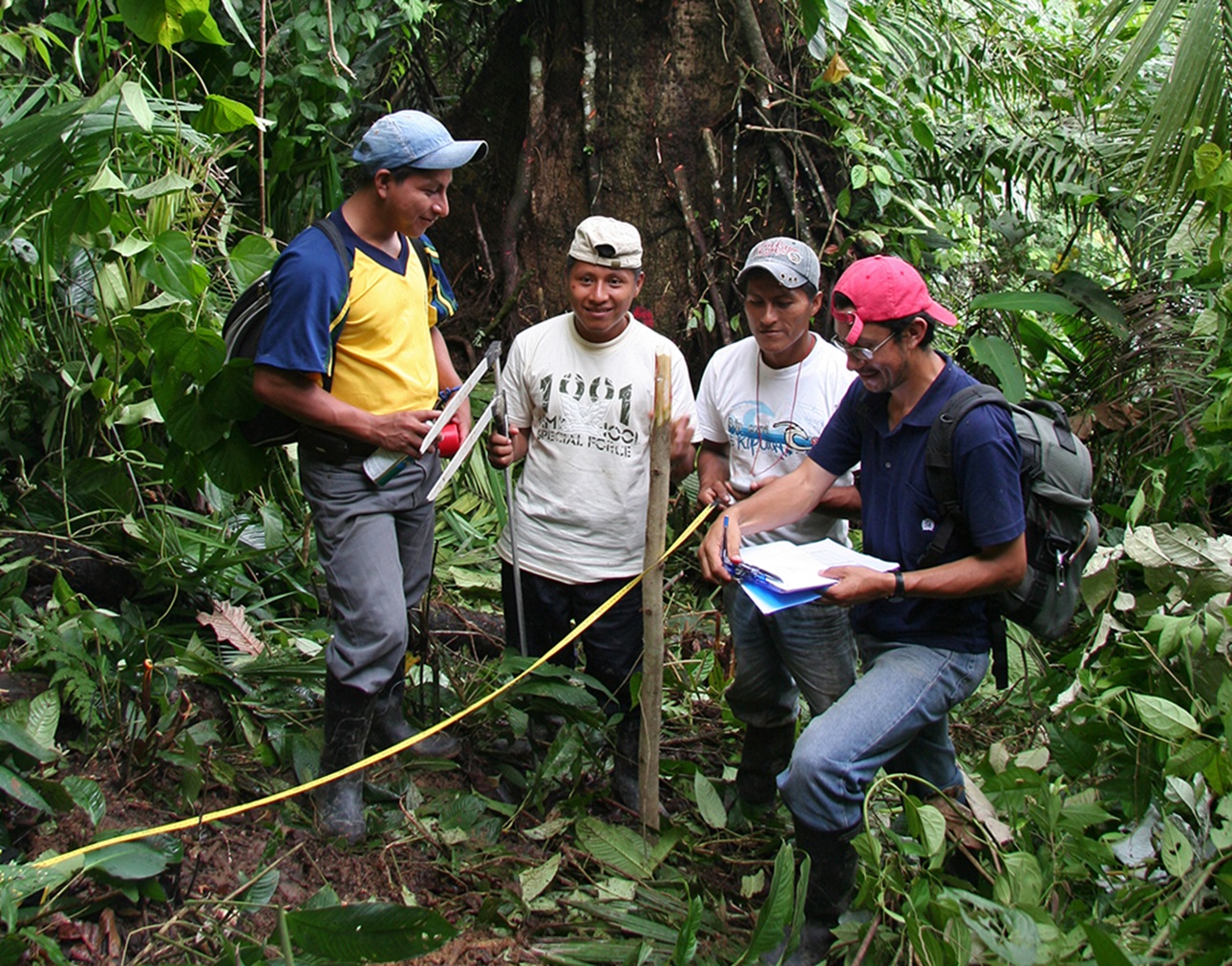 Klaus Schenck, CC-BY-SA-3.0, Wikimedia Commons
Klaus Schenck, CC-BY-SA-3.0, Wikimedia Commons
Ayoreo
The Ayoreo live mainly in the central Chaco region, with a population of 5,000 in Paraguay and Bolivia. They are divided into subgroups, and some are unfriendly towards each other. Recent tensions between Protestant Evangelicals and Roman Catholics have worsened this animosity.
The Totobiegosode subgroup of the Ayoreo faced hardships after forced relocations, and they have consistently struggled with a lack of essential resources and illnesses. They are currently fighting for official recognition of their land rights.
Cacataibo
The Cacataibo are indigenous people of the central Peruvian rainforest, inhabiting the river basins of Aguaytía, San Alejandro, and Zungaruyacu. Approximately 7,000 Cacataibo live in communities with land ownership or in the process of securing their territories.
Yet, beyond these settled groups, many Cacataibo choose a different path—living in isolation deep within the shadowy Cordillera Azul mountains. Known as the "Camanos," these individuals remain largely unseen, preserving a way of life that few outsiders ever glimpse.
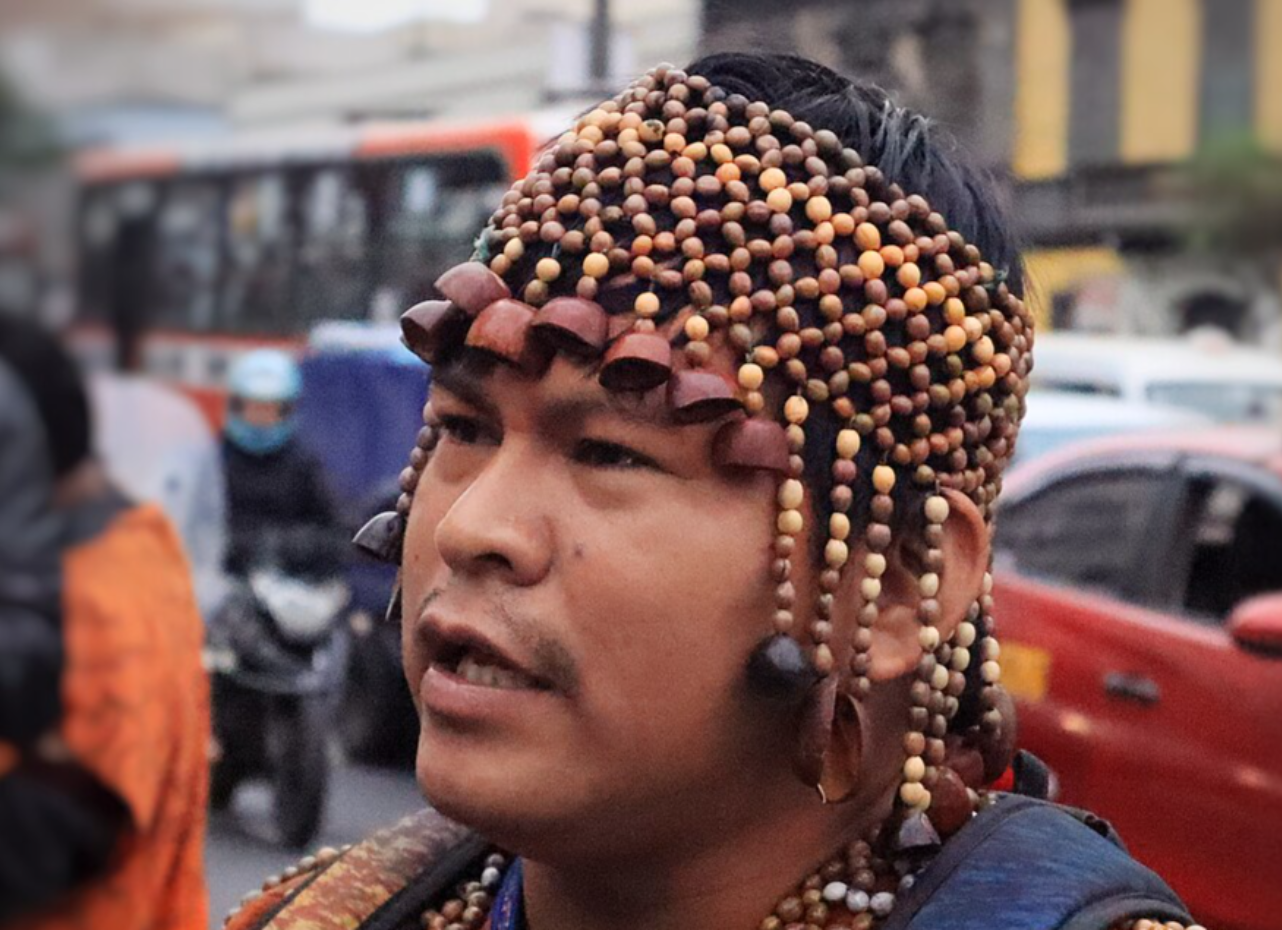 Aytana Avila, CC-BY-SA-4.0, Wikimedia Commons
Aytana Avila, CC-BY-SA-4.0, Wikimedia Commons
Carabayo
The Carabayo, also known as Aroje, resides in Rio Puré National Park in southeastern Colombia within the Colombian Amazon jungle near Brazil. They live in secure surroundings in long-shaped dwellings and communicate in the Carabayo language.
Interactions with outsiders in the past have caused violent clashes, leading to their isolation from nearby communities. Recently, the Colombian government granted permission for the Carabayo to live in isolation and protect their traditional lands.
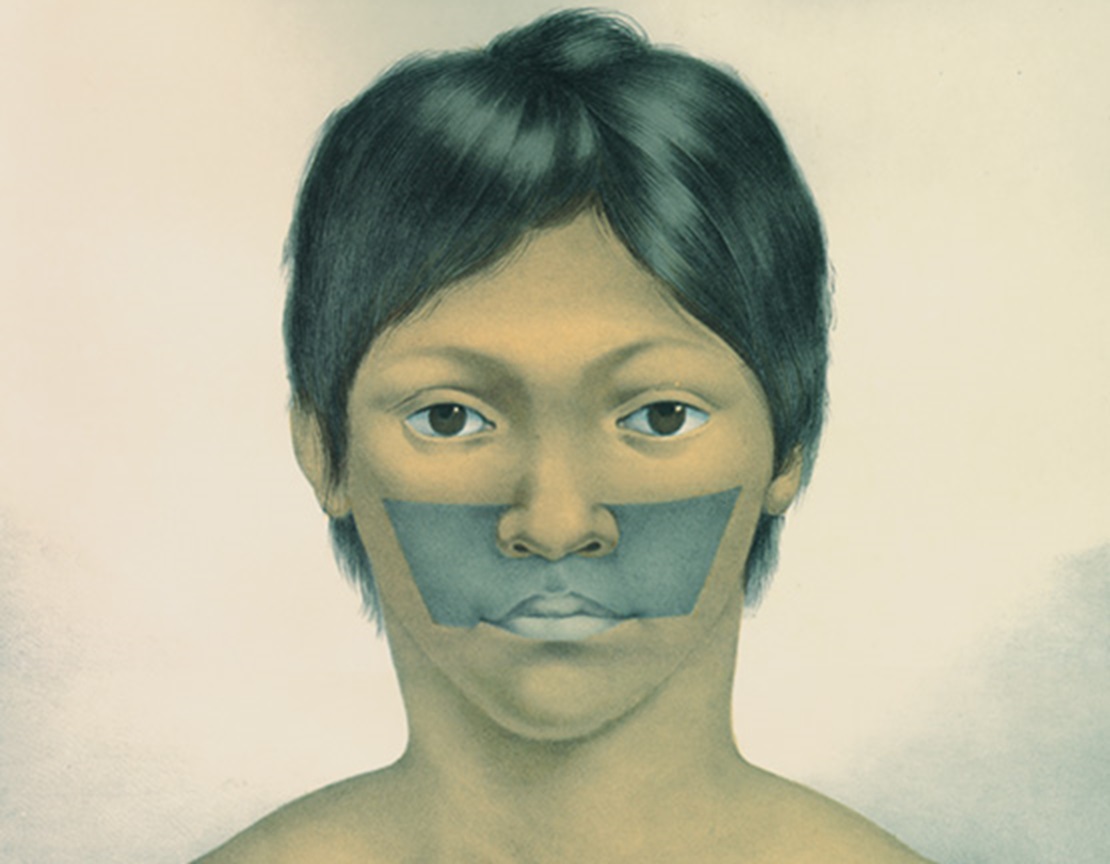 Johann Baptist von Spix, Wikimedia Commons
Johann Baptist von Spix, Wikimedia Commons
Cashinahua
The Cashinahua people live along various rivers in Peru and Brazil. Families are the main economic unit, while villages serve as social and political units. Conflict with rubber workers led to their relocation to the Curanja River, where they lived in isolation until interacting with traders for axes and machetes. Dsapproval of the traders' behavior led to tension between the Cashinahua and outsiders.
Chitonahua
The Chitonahua are a secluded indigenous group in the Peruvian Amazon known for hunting, fishing, and gathering in the rainforest. Their Panoan language affiliation and traditional lifestyle are preserved by conservationists and indigenous rights groups due to their limited contact with the outside world.
Previous run-ins with outsiders have exposed them to risks such as disease and resource exploitation, so many efforts are focused on safeguarding their health and land.
Fleicheros
The Fleicheros are also known as the "arrow people." They are a mysterious tribe in Brazil's Javari Valley that is so isolated, their language and ethnicity are unknown. They are skilled bow hunters and and will shoot poison arrows at intruders.
In recent years, the Brazilian government has reduced funding for organizations protecting uncontacted tribes, leading to tragic outcomes like the murder of members of the Fleicheros by illegal miners.
Hi-Merima
The Hi-Merima dwell near the winding Pinhuã River in Brazil’s Amazonas state, a native people whose numbers were estimated at over a thousand as far back as 1943. They remain largely isolated and uncontacted, known to fiercely guard their territory, often clashing with neighboring tribes.
Their encounters with the outside world are rare and fleeting—moments that barely pierce the veil of solitude they so fiercely protect. For over six decades, the Hi-Merima have chosen seclusion, living in the shadows between the jungle and the unknown.
Jarawa
The Jarawa tribe in the Andaman Islands was once known for their unfriendliness and attacks on nearby settlements. The isolated hunter-gatherers have lived in seclusion for centuries, but now they are facing rapid changes due to outside influences.
The once hostile tribe has shifted towards a more welcoming attitude towards outsiders and is embracing tourism as a source of benefits. Conservationists are closely watching these changes with worry about the impact on the tribe and their way of life.
Kawahiva
The Kawahiva, formerly known as the Rio Pardo Indians, are an isolated indigenous group living near Colniza in northern Mato Grosso, Brazil. They have limited contact with outsiders and are identified by physical artifacts like arrows and communal houses.
Their existence was discovered in 1999, possibly originating in the 1700s. Deforestation and illegal activities pose a threat to their survival.
Krikati-Timbira
The Krikati-Timbira, a native group in Brazil, value their cultural festivals that revolve around food gathering and fun activities like log races. Since the 19th century, cattle ranchers have encroached on their land, but Brazil's government now recognizes their territory. Despite one-third being Roman Catholic, most maintain strong ties to traditional beliefs with only a few being Evangelical.
Korubo
The Korubo tribe resides in the Javari Valley in Brazil. They were first contacted in the late 1800s, but not much is known about them. What is known is that they speak Panoan and they are known for their aggression with neighboring groups, whom they have killed on occasion.
Referred to as "men with clubs", the Korubo have limited farming skills, relying mainly on hunting with clubs and poison darts for survival. Both men and women wear red pigment and live in communal shelters. Authorities in Brazil are working to maintain distance from the tribe.
Lacandon
The Lacandón are a Mayan people living deep along the border where Mexico meets Guatemala, their numbers whispered to be between 300 and 1,000. Enveloped by the lush embrace of tropical rainforest, they cultivate corn, beans, squash, and tomatoes, while also hunting, fishing, and gathering the forest’s hidden fruits.
Their settlements—whether solitary homes or clustered caribales—stand as a quiet testament to a way of life balanced between tradition and change. Though once fiercely resistant to outside faiths, many have embraced Protestantism, casting shadows over ancient beliefs that quietly slip away as the 21st century unfolds.
Mascho-Piro
The Mashco-Piro are one of Peru's few indigenous groups living in isolation. They are descendants of past interactions with outsiders. The 'Rubber Boom' in the late 19th and early 20th centuries caused harm to indigenous people, including the Mashcos. Some Mashco-Piro women were observed near Manu national park in the late 1970s and they eventually settled in two nearby villages. Their territory faces continuous threats from various industries.
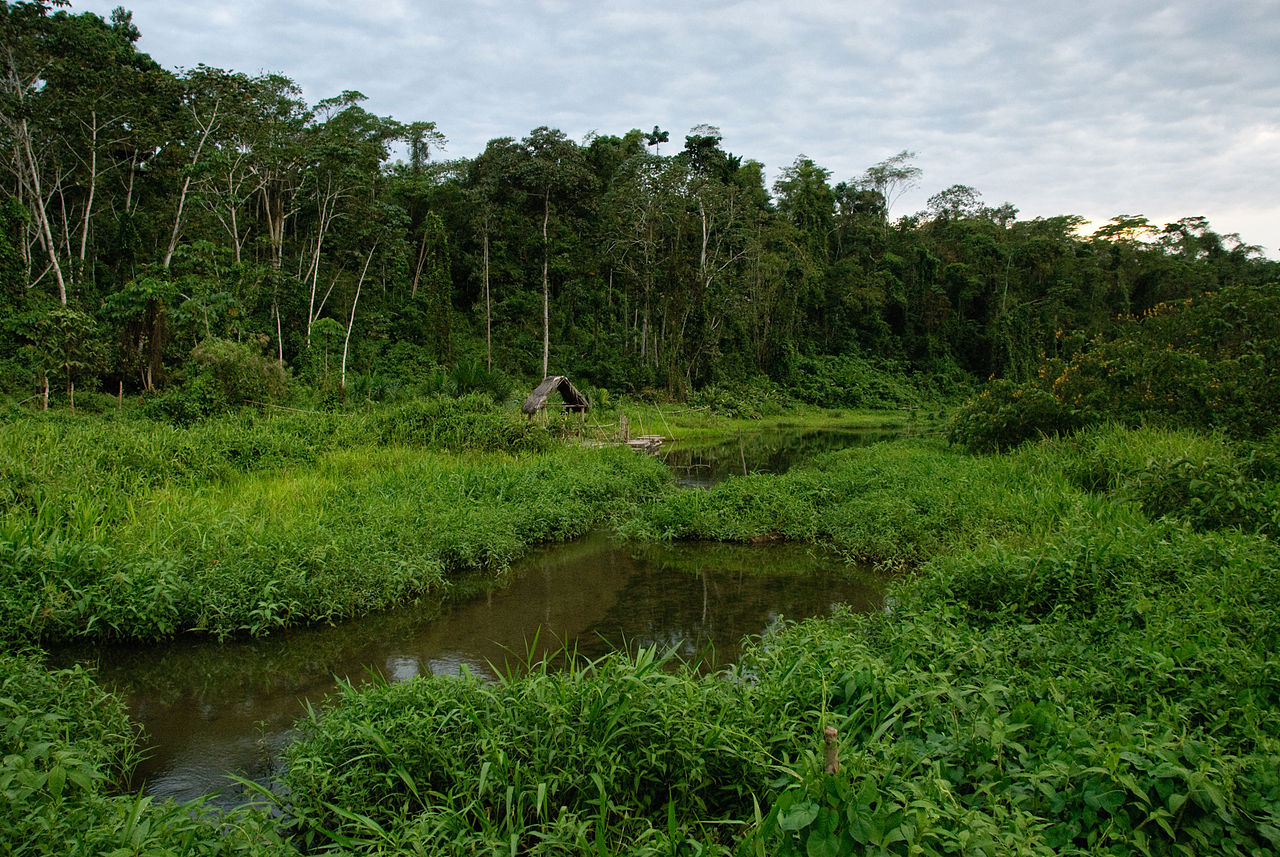 Corey Spruit, CC-BY-SA-2.0, Wikimedia Commons
Corey Spruit, CC-BY-SA-2.0, Wikimedia Commons
Matsé
The Matsés, also called the Mayoruna, are a native group from the Amazon regions of Peru and Brazil, with ancestral territories along the Javari and Galvez rivers. They protect their land from other groups, often facing challenges from illegal activities. Their language is Panoan, spoken by around 3,200 individuals. Like other isolated tribes in Brazil, Matsés communities rely on the rainforest for resources.
Moxihatetema
The Moxihatetema are a secluded indigenous group in southVenezuela that is part of the Yanomami community. Known for their expertise in the rainforest, they live a nomadic lifestyle focused on hunting, fishing, and horticulture. Their isolation helps preserve their cultural traditions and shields them from outside threats. Efforts by indigenous rights groups and the Venezuelan government aim to protect their land from illegal activities.
Piripkura
The Piripkura people live in their Indigenous Territory in Mato Grosso, Brazil. Only three survivors of this isolated group exist, as many were killed by loggers in the 1980s. The tribe used to have over 100 members and had similar technology to nearby tribes. Their population decline remains a mystery.
Sentinelese
The Sentinelese inhabit North Sentinel Island—arguably the most isolated place on Earth—veiled in silence and fierce defense. They reject all contact, striking with deadly force at any who dare approach.
In 2004, one Sentinelese was seen firing arrows at a helicopter, a stark warning from a people fiercely protective of their solitude. Years later, in 2018, American missionary John Allen Chau paid the ultimate price when he attempted to breach their world, a tragic reminder of the fragile boundary between two very different realities—and the dangers of disturbing a people untouched by time.
Suruwaha
The Suruwaha are a small tribe in the Amazon rainforest of Brazil. They have faced isolation and challenges due to illnesses and violent confrontations with outsiders in the past. They live in spacious cone-shaped houses in the tropical rainforests of the Amazonas state, relying on hunting, fishing, and their botanical expertise for sustenance. However, they face ongoing threats from evangelical missionaries who want to remove them from their community.
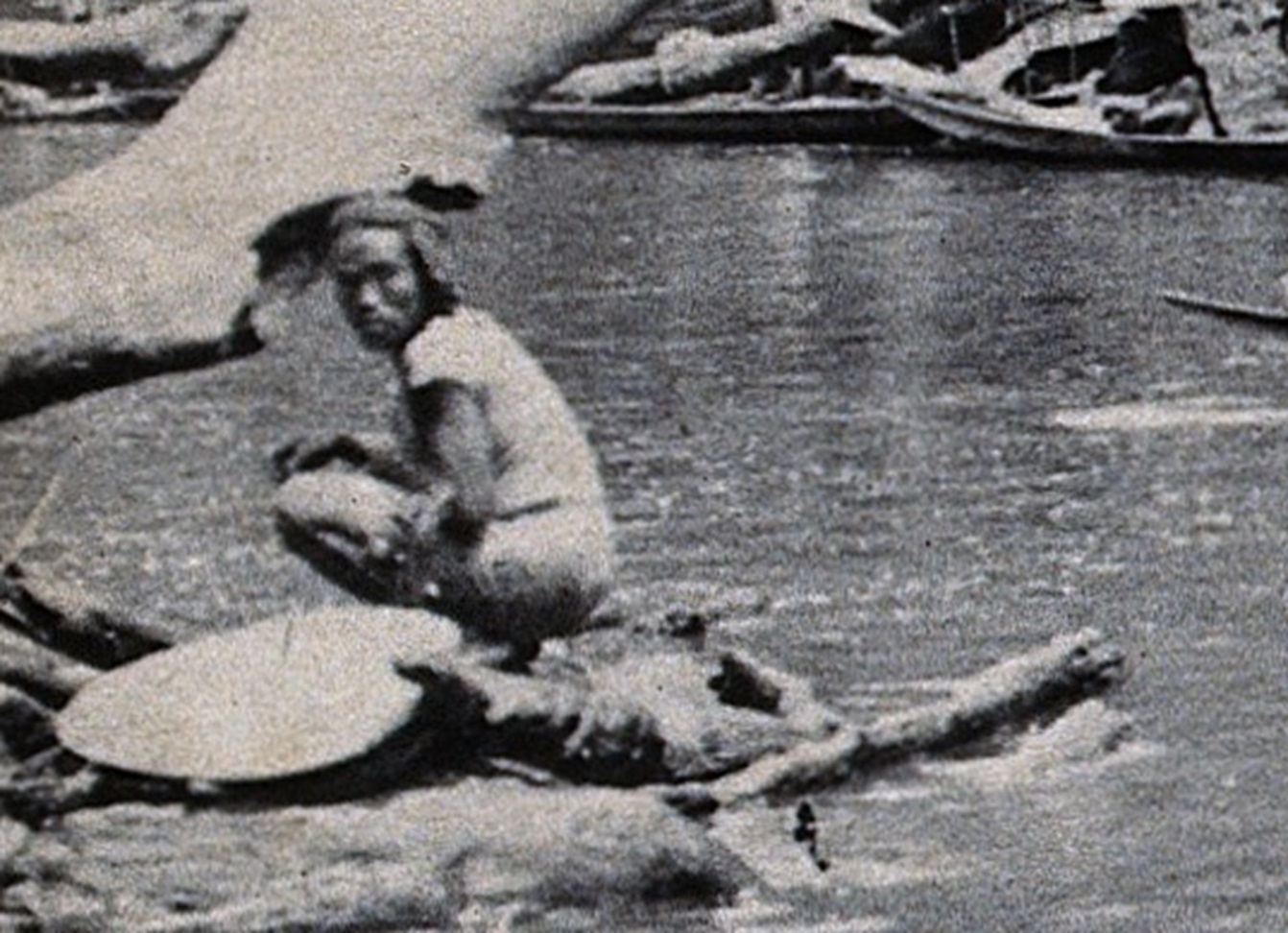 Wellcome Collection gallery, CC-BY-SA-4.0, Wikimedia Commons
Wellcome Collection gallery, CC-BY-SA-4.0, Wikimedia Commons
Tagaeri
Tagaeri, a subgroup of Huaraoni in Ecuador, consists of 1,500 members protecting 20,000 square kilometers of forested land. Despite others choosing ecotourism, they relocate deeper into the forest to avoid outsiders. Only one member, Tiwe, interacts with the outside world. They safeguard their territory from non-native beings.
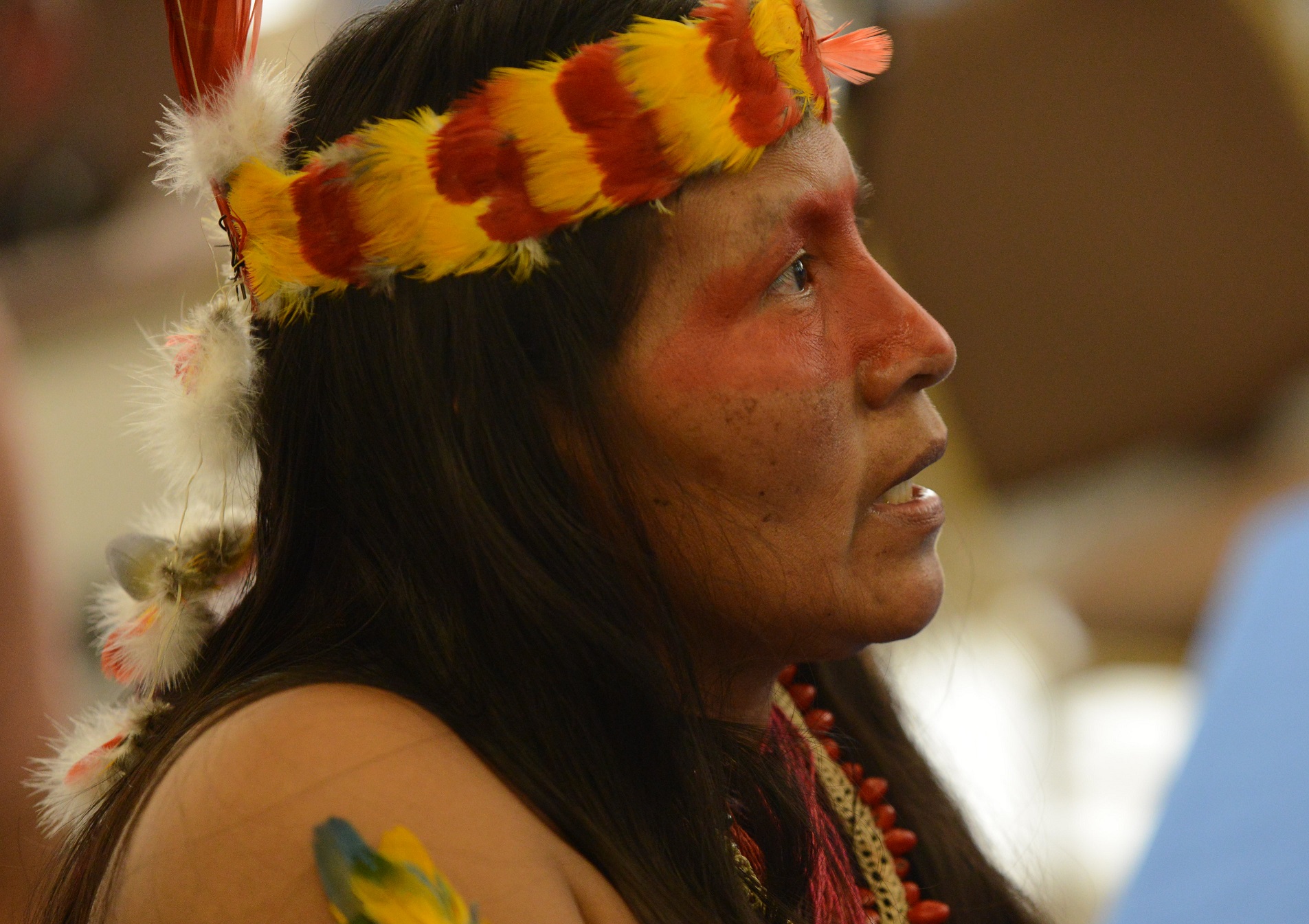 Comisión Interamericana de Derechos Humanos, Flickr
Comisión Interamericana de Derechos Humanos, Flickr
Taromenane
The Taromenane ilve in the same region as the Tagaeiri, within Yasuni National Park in Ecuador, and they are just as are isolated. There are an estimated 150-300 Taromenane and 20-30 Tagaeri living nomadically in the rainforest. The recent threat to their existence comes from oil developments and illegal logging in the park, with reports of violence against them by illegal loggers in 2008.
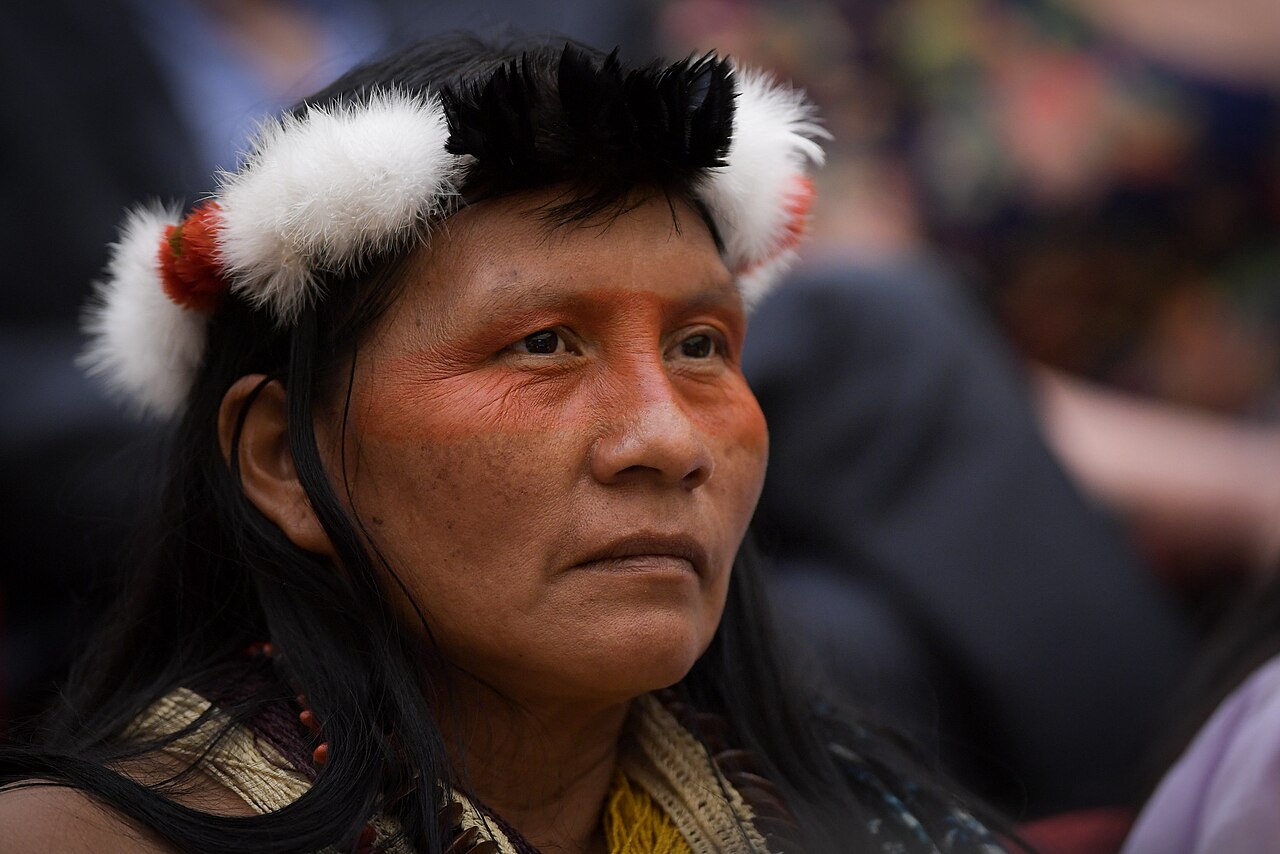 Superior Tribunal de Justiça, CC-BY-SA-2.0, Wikimedia Commons
Superior Tribunal de Justiça, CC-BY-SA-2.0, Wikimedia Commons
Uru-Eu-Wau-Wau
The Uru-Eu-Wau-Wau is a native tribe in Brazil's Rondônia region. They reside in six villages on the edges of the Uru-Eu-Uaw-Uaw Indigenous Territory, sharing the land with the Amondawa and Uru Pa In tribes. An encounter with outsiders in 1981 led to a massive population decline due to illnesses and attacks.
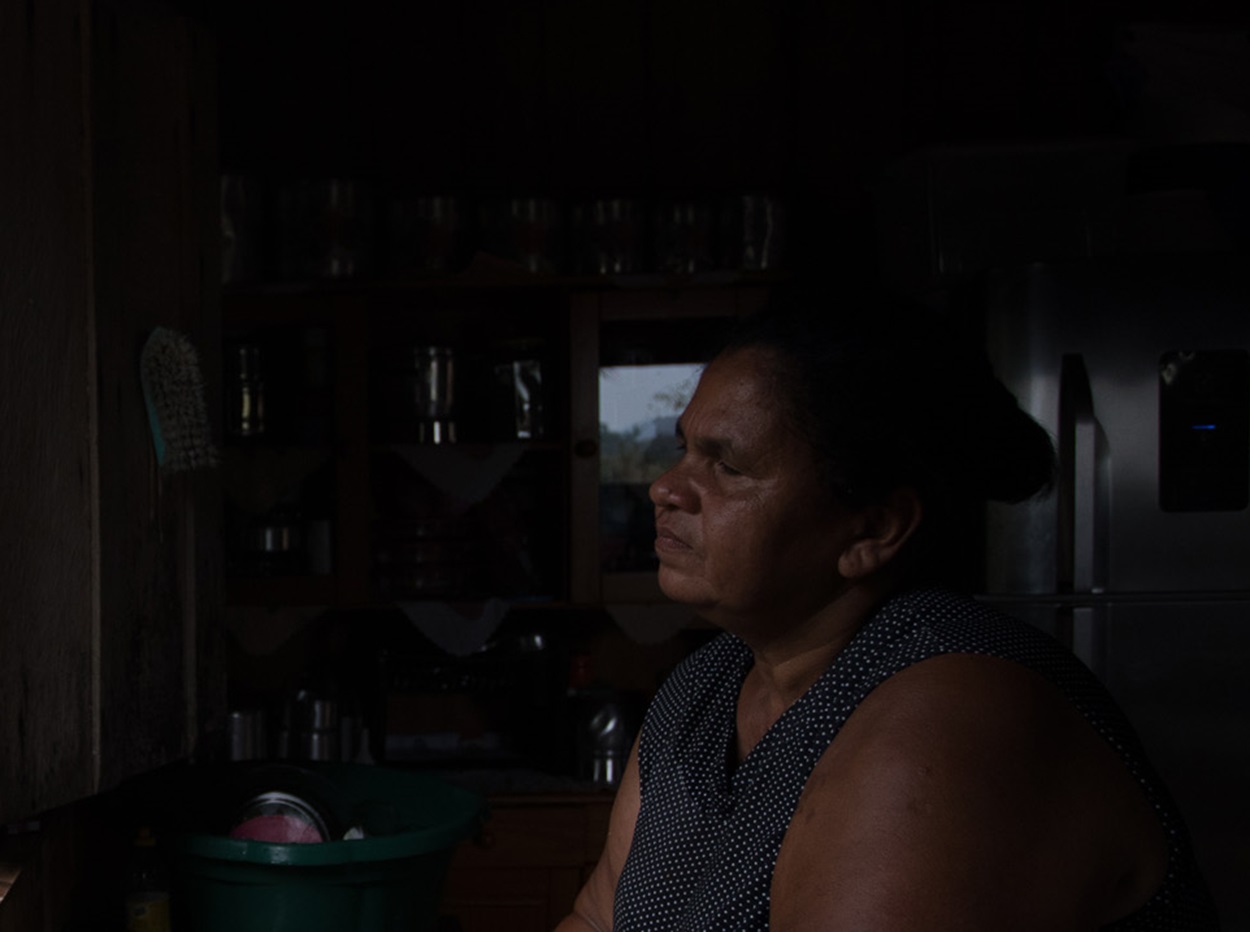 Amazônia Real, CC-BY-SA-2.0, Wikimedia Commons
Amazônia Real, CC-BY-SA-2.0, Wikimedia Commons
Zo'é
Deep within the northern Brazilian Amazon, the Zo’é live a life largely hidden from the outside world. Their first meaningful encounter came only in 1987, when missionaries from the New Tribes Mission ventured into their realm—an event that prompted the government to impose strict measures to shield them from the invisible threats of disease.
Their homes are open, rectangular thatched structures, woven into the forest like whispers among the trees. Brazil nuts hold a special place, both as sustenance and craft, while gardens yield a variety of fruits and vegetables. Polygamy shapes their social fabric, yet within this secluded community, equality binds them all—an ancient rhythm beating quietly beneath the jungle canopy.
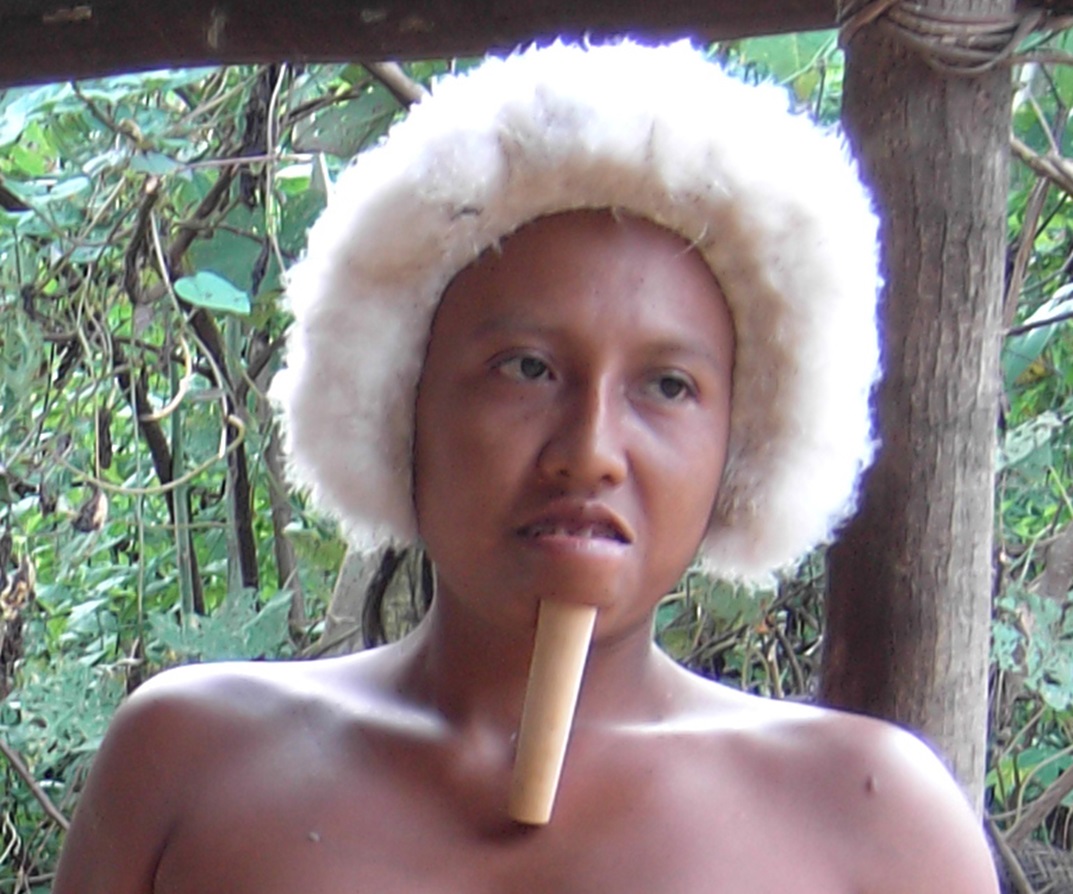 Albert abril, CC-BY-SA-3.0, Wikimedia Commons
Albert abril, CC-BY-SA-3.0, Wikimedia Commons

